The Experimental Analysis of Behavior (ch. 2)
0.0(0)
0.0(0)
Card Sorting
1/24
There's no tags or description
Looks like no tags are added yet.
Study Analytics
Name | Mastery | Learn | Test | Matching | Spaced |
|---|
No study sessions yet.
25 Terms
1
New cards
Structural/Topographical Description of Behavior
- What does behavior look like?
- the "lay of the land"
ex. a child finds a hidden object & a functional analysis suggest this behavior has resulted in specific consquences- the child had a particular history of reinforcement responsible for their capability.
- the "lay of the land"
ex. a child finds a hidden object & a functional analysis suggest this behavior has resulted in specific consquences- the child had a particular history of reinforcement responsible for their capability.
2
New cards
History of Reinforcement
The combination of respondent & operant conditioning in your past. Previous experiences w/ reinforcement & punishment that influence current & future behaviors.
3
New cards
Functional Description of Behaviour
- why does behavior happen?
- defined by the causes of behavior
- defined by the causes of behavior
4
New cards
Respondent (conditioning)
Behavior that increases or decreased by the presentation of a stimulus that precedes the response
5
New cards
Elicited
Respondent behavior is ELICITED (reflexive & involuntary), in the sense that it reliably occurs when the US is presented
6
New cards
Emitted
Operant behavior is EMITTED (voluntary) at some frequency based on an organism's genetic endowment
7
New cards
Operant (conditioning)
Behavior that's strenthened or weakened by the events the events that follow the response.
8
New cards
How do we measure behavior? (FIDL)
Frequency - the # of times the behavior happens
Intensity - the magnitude/severity of the behavior
Duration - the amount of time a behavior occurs
Latency - the amount of time passes before a behavior occurs
Intensity - the magnitude/severity of the behavior
Duration - the amount of time a behavior occurs
Latency - the amount of time passes before a behavior occurs
9
New cards
Single Case Designs
focuses on behavior change at the individual level, but doesn't mean that a study has 1 participant (ex. studying students with ADHD)
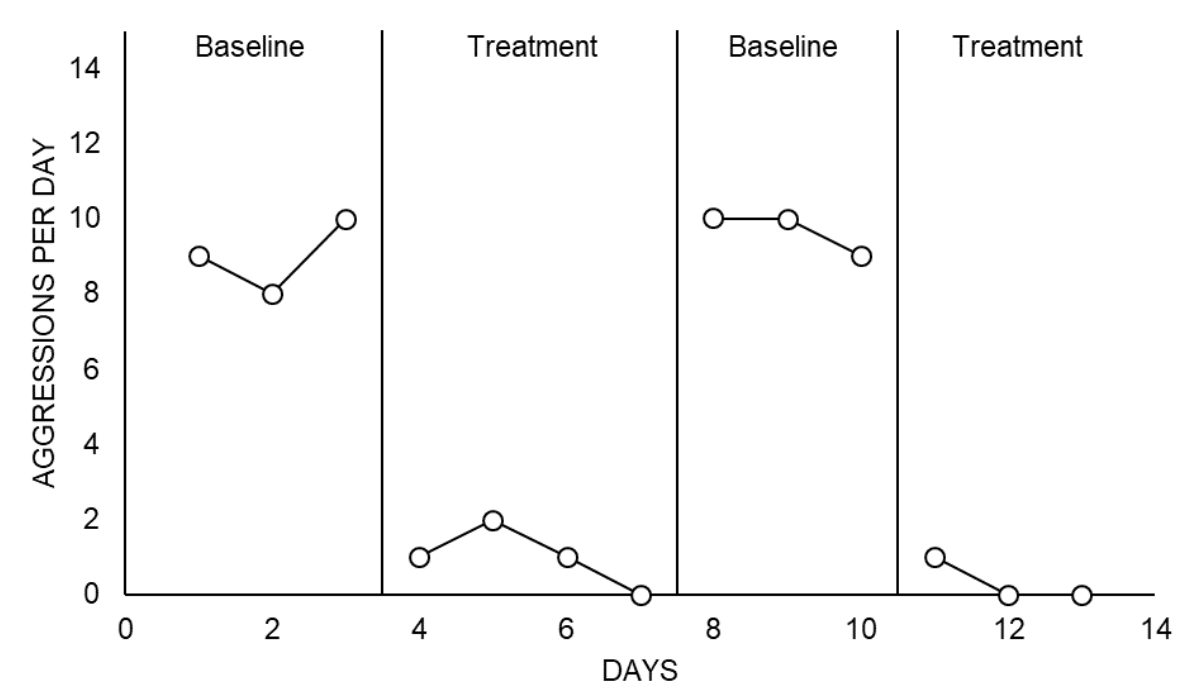
10
New cards
Internal Validity
- how certain you are that your independent variable is what CAUSED a change in the dependent variable
- control over independent variable & variables that might interfere
- control over independent variable & variables that might interfere
11
New cards
External Validity
- how replicable the effect is on other people in other situations
- does it apply to the GENERAL public?
- does it apply to the GENERAL public?
12
New cards
Reversal "ABAB" Design
To measure a baseline (the first A), a treatment measurement (the first B), the withdrawal of treatment (the second A), and the re-introduction of treatment (the second B)
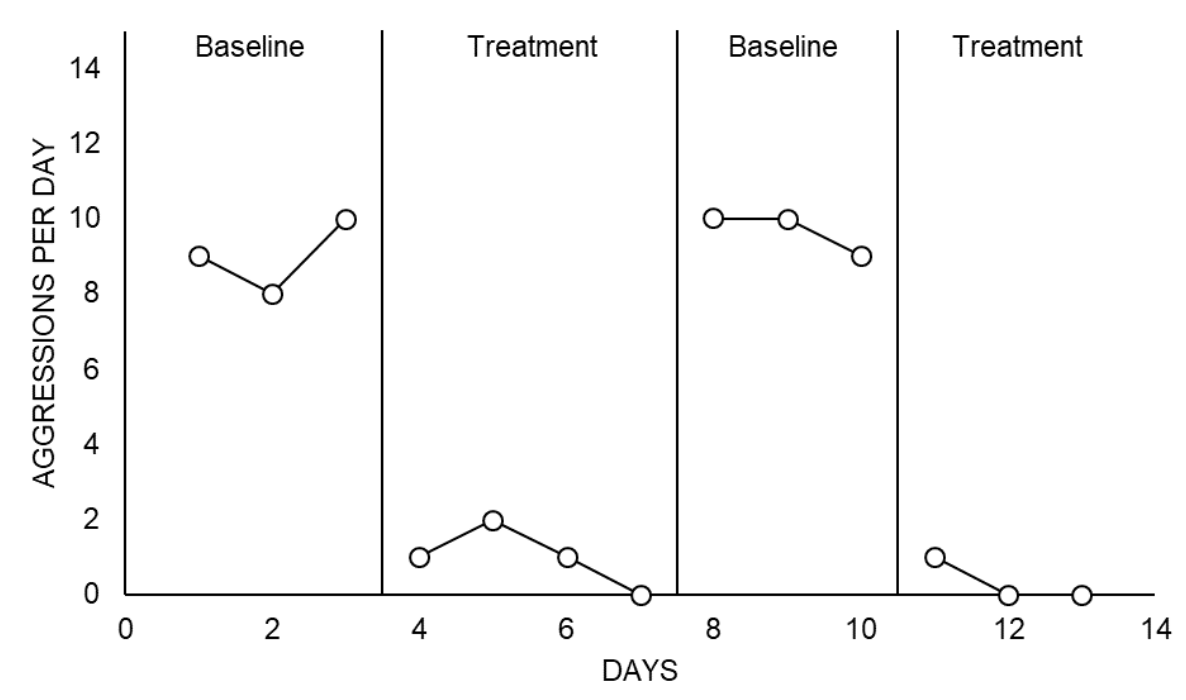
13
New cards
Multiple Baseline Design
Two or more behaviors are assessed to determine their initial, stable expression (i.e., baseline) and then IV is applied to one of the behaviors while the others are unaffected. Demostrates that behavior changes when the IV is introduced.
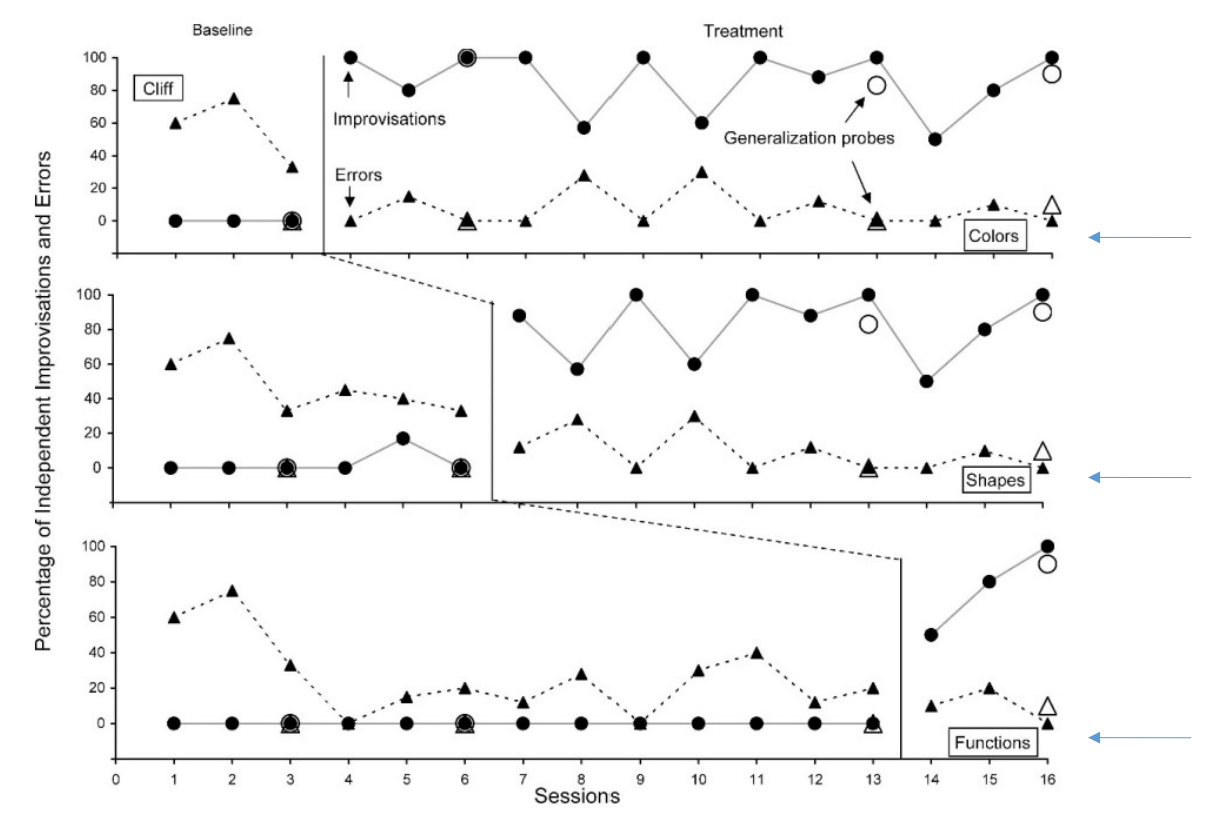
14
New cards
Multielement Design
Measures the effect of multiple treatments delivered one after the other & used to evaluate multiple IVs
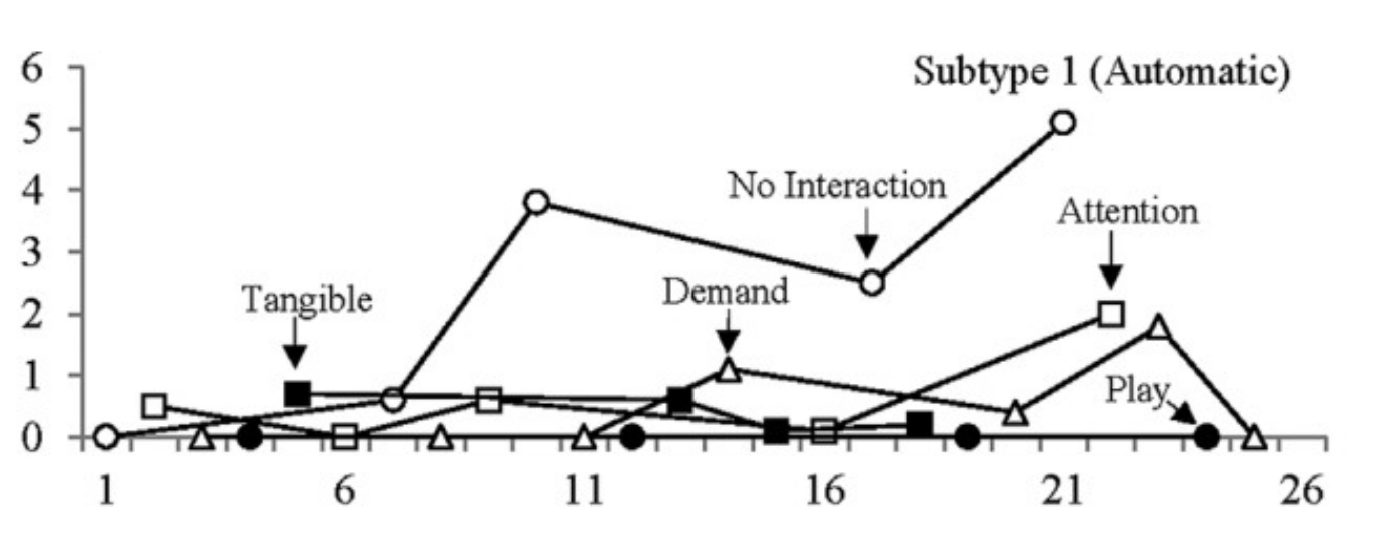
15
New cards
Visual Analysis - Trend
Behavior might have changed w/o the IV or changed direction immediately following IV
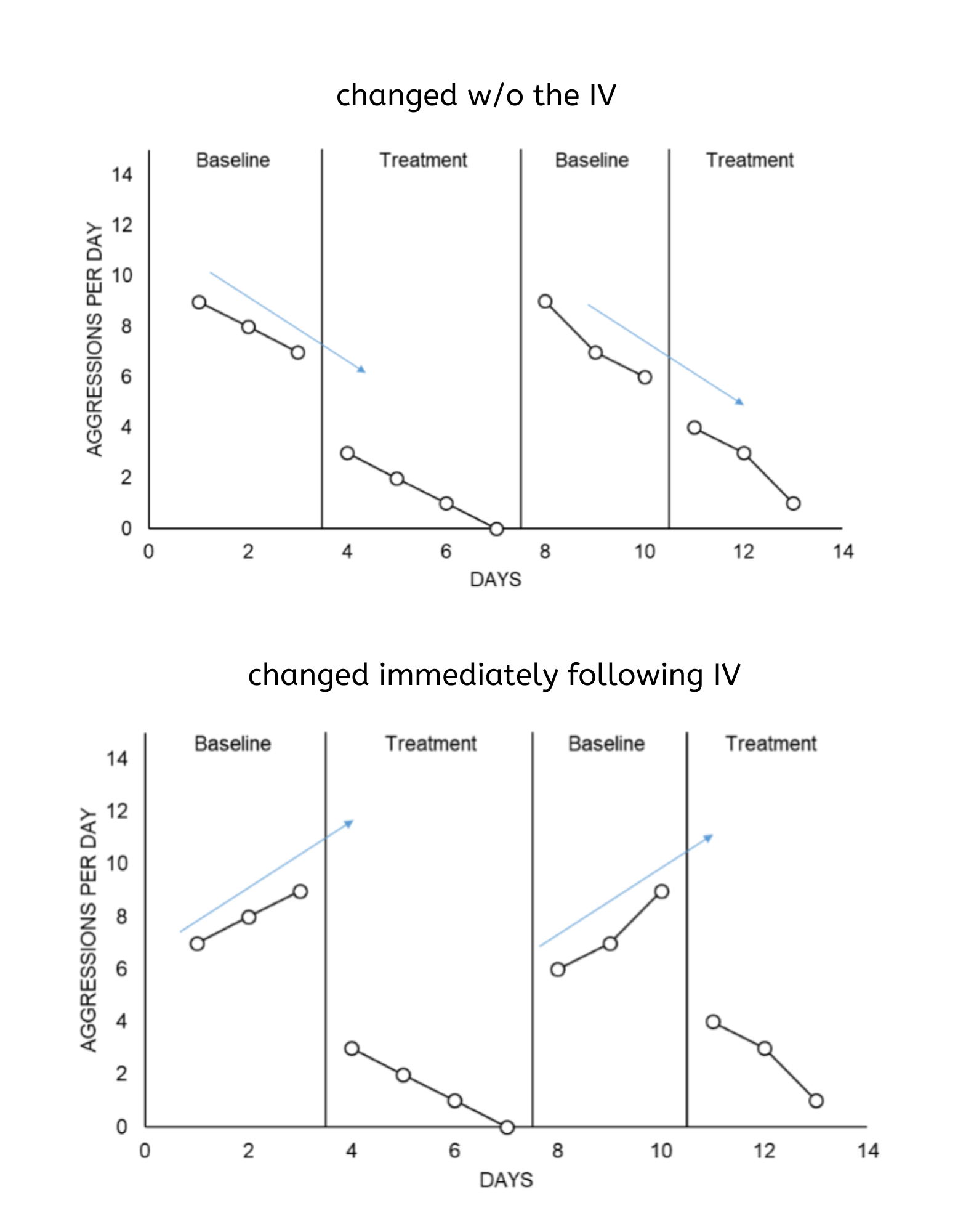
16
New cards
Visual Analysis - Level
Small or large change in magnitude of behavior
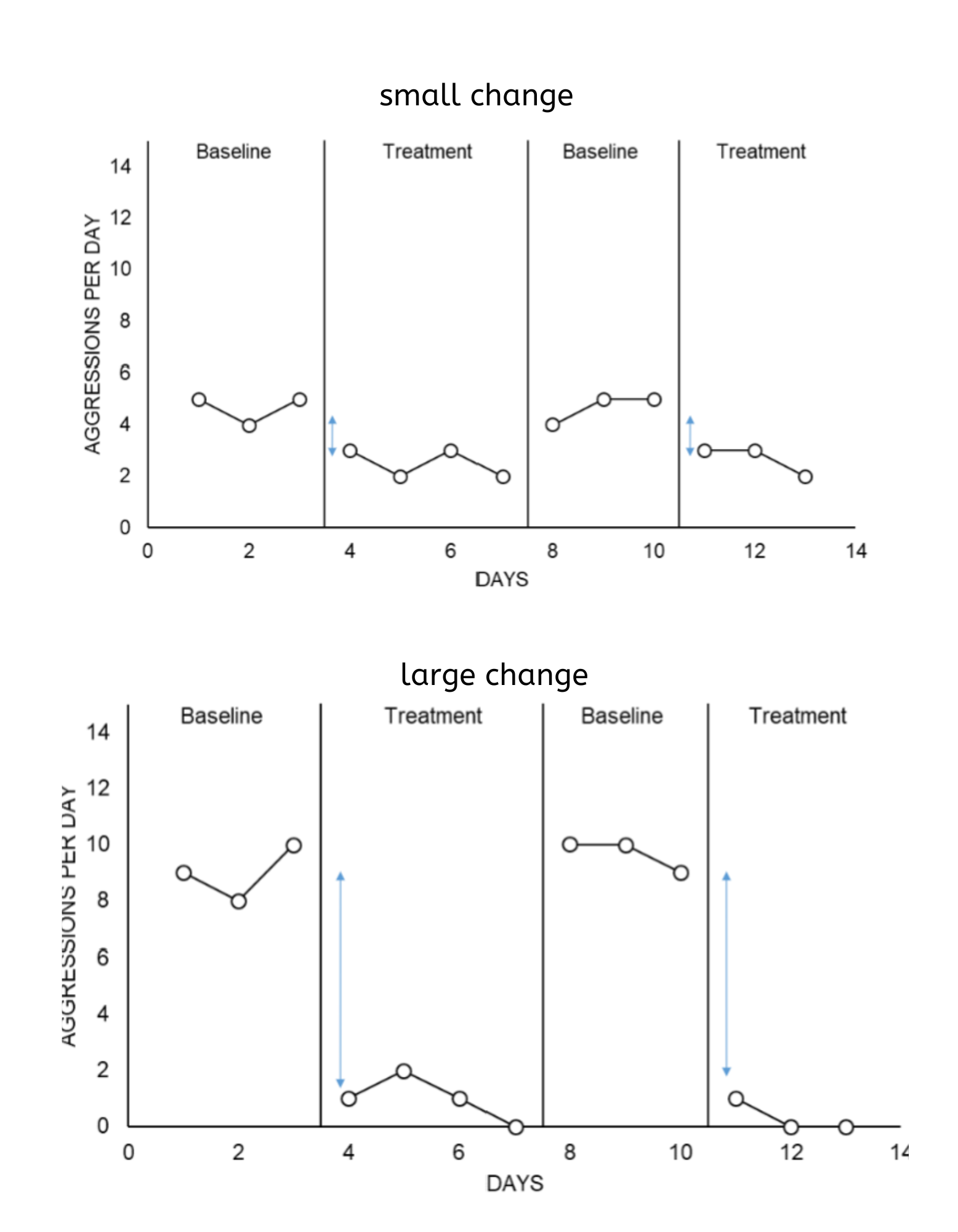
17
New cards
Visual Analysis - Variability
Overlap between baseline & treatment or never desired but is always present
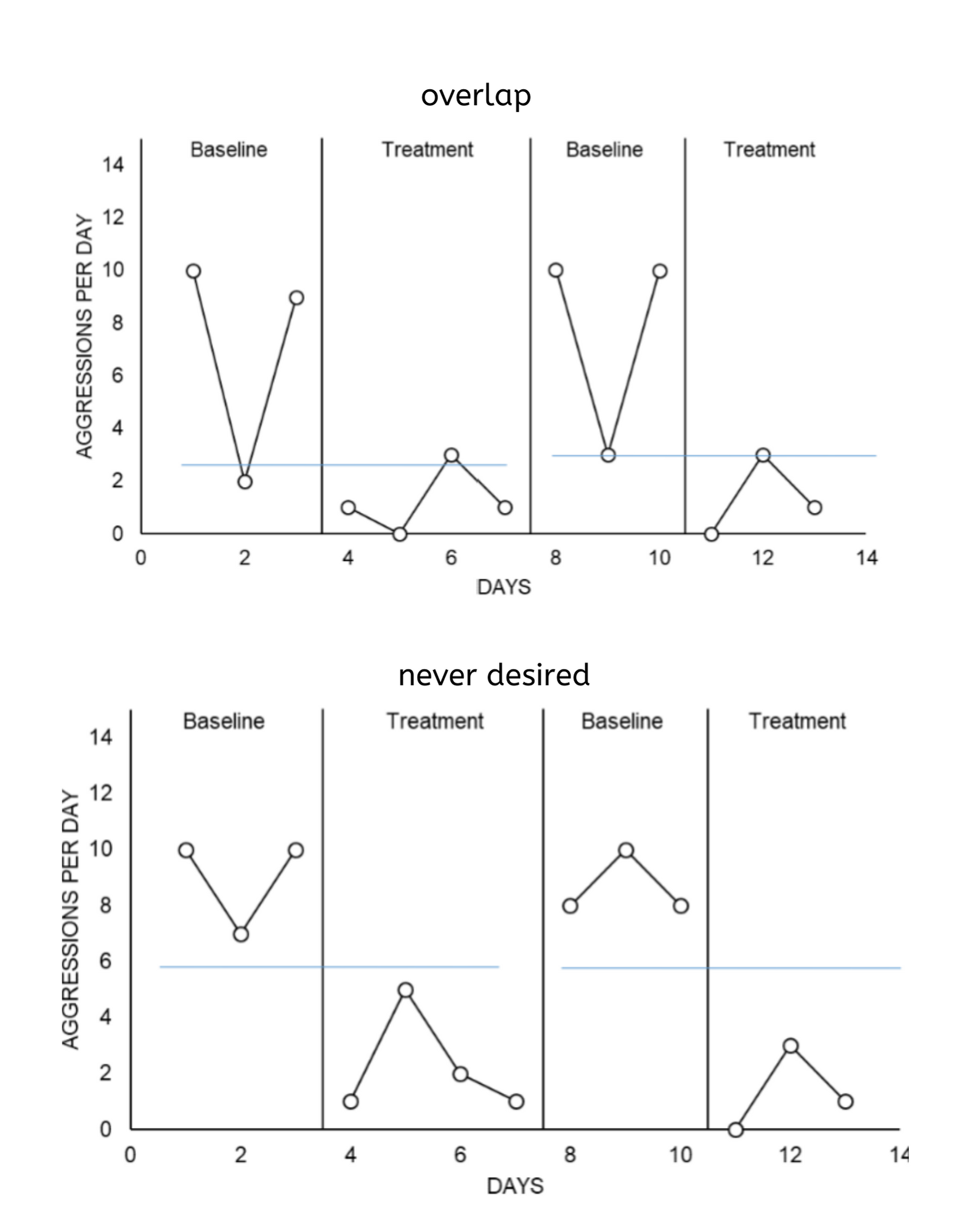
18
New cards
Visual Analysis - Immediacy & No Replication
Immediacy - undesireable trend, but behavior change immediately between conditions
No Replication - baseline levels did not return
No Replication - baseline levels did not return
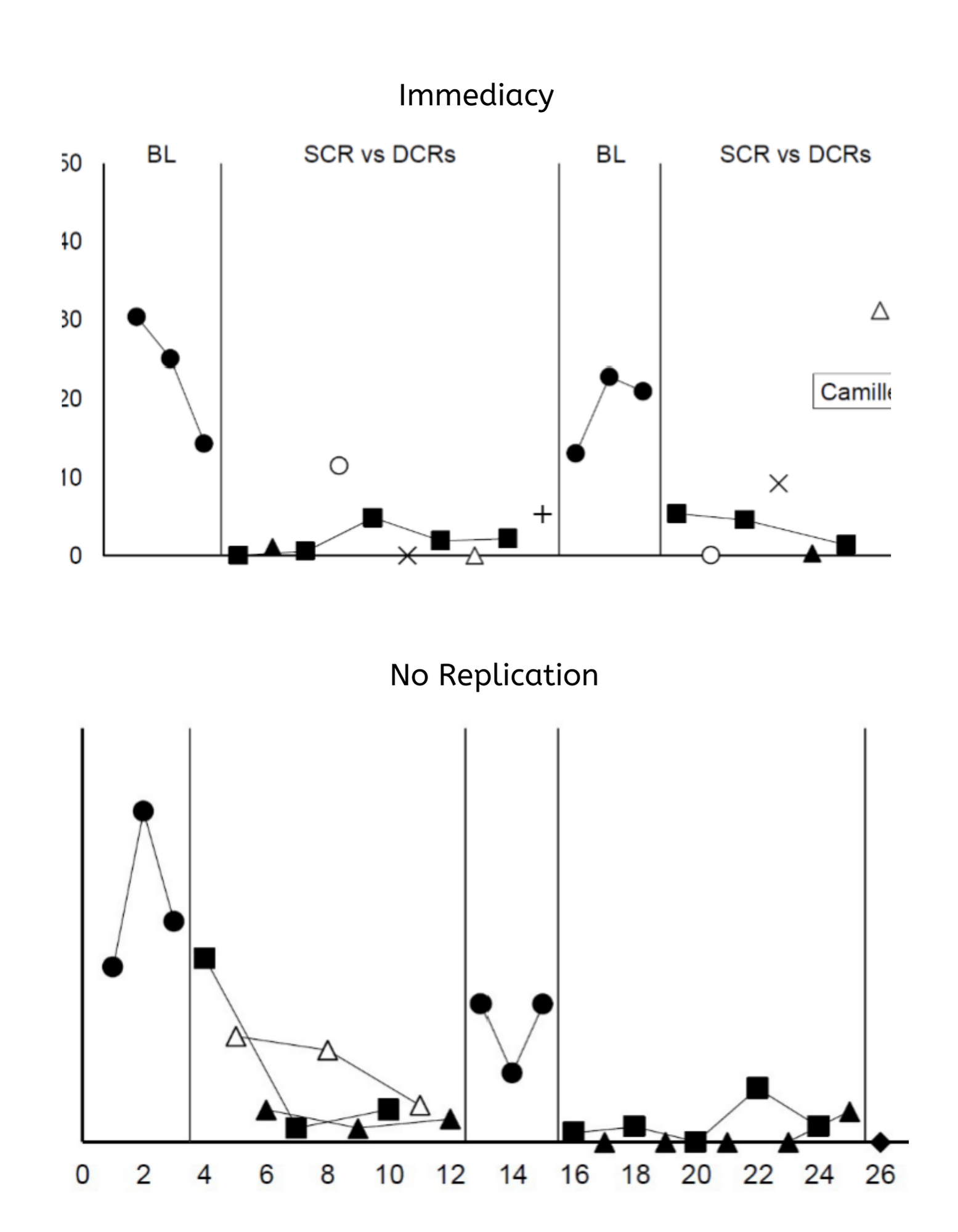
19
New cards
Independent Variable (IV)
- variable research controls
- usually a treatment or internvention
- usually a treatment or internvention
20
New cards
Dependent Variable (DV)
the effect, it changes because of the independent variable
21
New cards
Antecedent - Discriminative Stimuli (SD)
signal that reinforcement is available
(ex. A therapist named Jenny, is working with Ben (4 y/o). Jenny brings an iPad that is fully charged to the session. Ben is learning to request. Ben asks for the iPad and Jenny let’s Ben play with the ipad. The iPad is an SD for Ben asking for the iPad because it signals that the iPad is available as a reinforcer. )
(ex. A therapist named Jenny, is working with Ben (4 y/o). Jenny brings an iPad that is fully charged to the session. Ben is learning to request. Ben asks for the iPad and Jenny let’s Ben play with the ipad. The iPad is an SD for Ben asking for the iPad because it signals that the iPad is available as a reinforcer. )
22
New cards
Antecedent - S-Delta (SΔ)
signal that reinforcement is UNavailable
(ex. A therapist named Jenny, is working with Ben (4 y/o). Jenny brings an iPad that has a dead battery to the session. Ben is learning to request. Ben asks for the iPad and Jenny shows Ben the iPad’s battery is dead. Ben stops asking for the iPad. The iPad is an SΔ for Ben asking for the iPad because it signals that the iPad is not available as a reinforcer.
(ex. A therapist named Jenny, is working with Ben (4 y/o). Jenny brings an iPad that has a dead battery to the session. Ben is learning to request. Ben asks for the iPad and Jenny shows Ben the iPad’s battery is dead. Ben stops asking for the iPad. The iPad is an SΔ for Ben asking for the iPad because it signals that the iPad is not available as a reinforcer.
23
New cards
Antecedent - Motivating Operations
- increase/decrease the power of reinforcement
- increase/decrease probability of behavior to access reinforcement
- increase/decrease probability of behavior to access reinforcement
24
New cards
Hypothetical Construct
A conjectured entity, process, or event that is not observed directly but is assumed to explain an observable phenomenon
25
New cards
Circular Reasoning
The argument assumes what it is supposed to prove
(ex.18 y/os have the right to vote because it's legal for them to vote)
(ex.18 y/os have the right to vote because it's legal for them to vote)